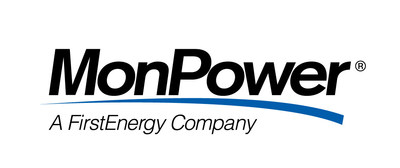Construction is Underway on Second Utility-Grade Solar Site in West Virginia
- None.
- None.
Insights
The construction of Mon Power and Potomac Edison's new solar site represents a significant step in the energy transition within West Virginia. This move is not only about expanding renewable energy capacity but also about aligning with the growing corporate demand for green energy, which can be a competitive advantage in attracting businesses to the area. The initiative to transform a brownfield site into a utility-grade solar facility is a strategic use of land that has been previously underutilized, potentially mitigating environmental concerns and contributing to the company's corporate social responsibility profile.
The investment in local manufacturing for the solar panels and equipment underscores a commitment to domestic sourcing, which may resonate positively with stakeholders and consumers increasingly concerned with supply chain ethics and sustainability. Moreover, employing local union workers for the construction can foster community goodwill and stimulate the local economy through job creation.
The cumulative goal of generating 50 megawatts across all five planned sites could have a material impact on FirstEnergy's energy mix and operational efficiency. However, the financial implications for FirstEnergy will depend on the project's cost, the ability to secure customer subscriptions and the regulatory environment, particularly any incentives or subsidies for renewable energy projects.
FirstEnergy's investment into solar infrastructure is indicative of the broader industry trend where utilities are diversifying their energy portfolios. Investors will likely assess the long-term revenue potential from these renewable assets against the upfront capital expenditures and ongoing operational costs. The solar sites' ability to attract customer subscriptions is key, as it directly affects revenue projections. The mention of seeking final approval from the Public Service Commission suggests regulatory hurdles that could influence project timelines and financial outcomes.
The stock market typically reacts to such developments with a focus on future earnings potential and cost savings from renewable energy sources. However, the market will also be vigilant about the execution risks associated with construction and regulatory compliance. The strategic shift towards renewables may be viewed favorably if it aligns with investor sentiment on sustainability and environmental, social and governance (ESG) criteria.
It is important to monitor FirstEnergy's quarterly financials following the solar sites' completion to evaluate the return on investment and the impact on the company's overall profitability and market valuation.
The construction of the Rivesville solar site by FirstEnergy is a pertinent example of how environmental and economic objectives can converge. The site's projected capacity to power a significant number of homes with renewable energy illustrates the potential for job creation and economic stimulation in the short term, while contributing to emissions reduction in the long term.
The choice of a brownfield site for the solar installation is economically efficient, leveraging land that might otherwise remain unused. This approach can also reduce the opportunity cost typically associated with greenfield developments. The environmental benefits extend beyond clean energy production, potentially improving local land values and contributing to community revitalization.
However, the transition to renewable energy can have complex economic implications, including the potential for stranded assets in the fossil fuel sector and the need for new investments in grid infrastructure to accommodate intermittent power sources like solar. The success of such projects in delivering economic benefits will depend on careful management of these transitions and the responsiveness of the market and regulatory frameworks.
Mon Power and Potomac Edison's
Click here to view and/or download drone footage of the
The
Jim Myers, President of FirstEnergy's West Virginia Operations: "We are proud to be transforming a former coal ash disposal site into a source of clean renewable energy for our customers. We believe the energy generated by our
The
The
Ultimately, the companies' five sites are expected to collectively generate 50 megawatts of renewable energy. Construction of the
To subscribe or find out more about the solar program, Mon Power and Potomac Edison customers in
Mon Power serves about 395,000 customers in 34
Potomac Edison serves about 285,000 customers in seven counties in
FirstEnergy is dedicated to integrity, safety, reliability and operational excellence. Its electric distribution companies form one of the nation's largest investor-owned electric systems, serving more than six million customers in
![]() View original content to download multimedia:https://www.prnewswire.com/news-releases/construction-is-underway-on-second-utility-grade-solar-site-in-west-virginia-302093234.html
View original content to download multimedia:https://www.prnewswire.com/news-releases/construction-is-underway-on-second-utility-grade-solar-site-in-west-virginia-302093234.html
SOURCE FirstEnergy Corp.
FAQ
What is the purpose of the construction at the Rivesville site by FirstEnergy Corp. (FE)?
How much power will the solar panels at the Rivesville site generate?
What is the significance of the Rivesville site being a brownfield location?
How many solar sites does FirstEnergy Corp. plan to build in West Virginia?









